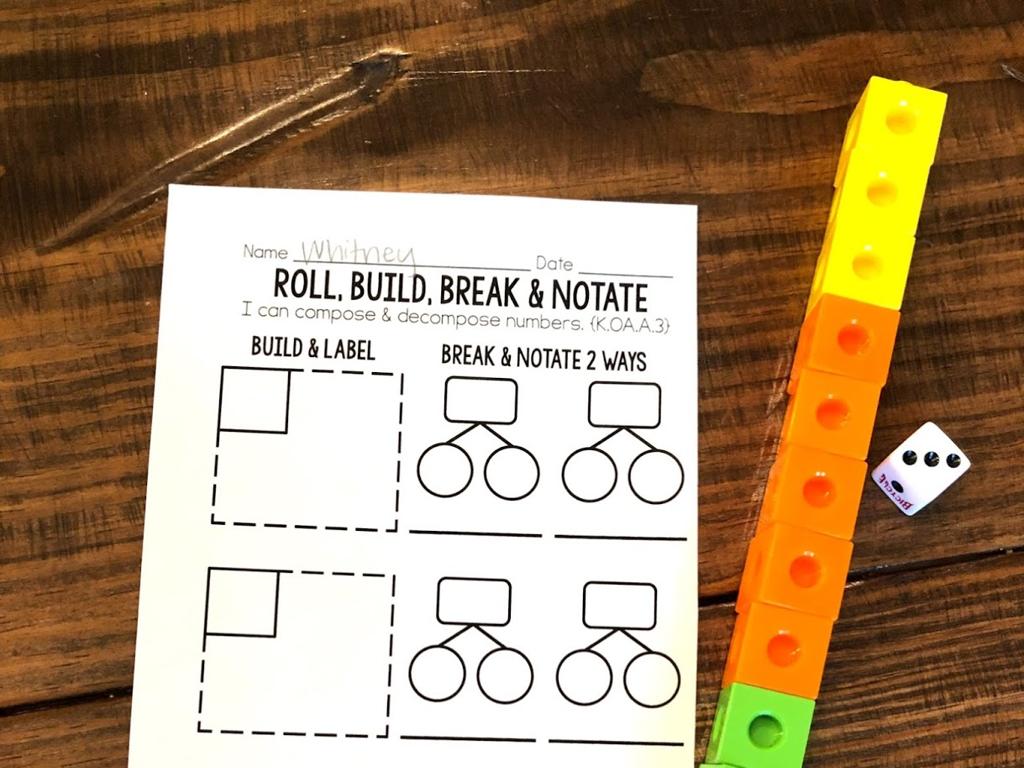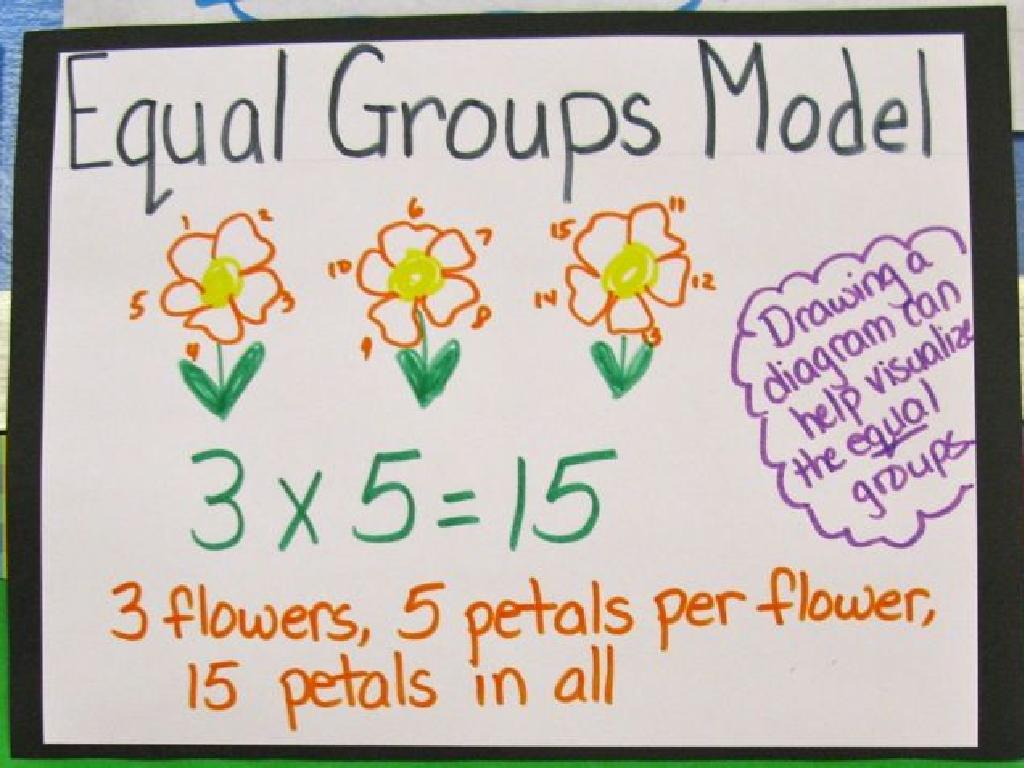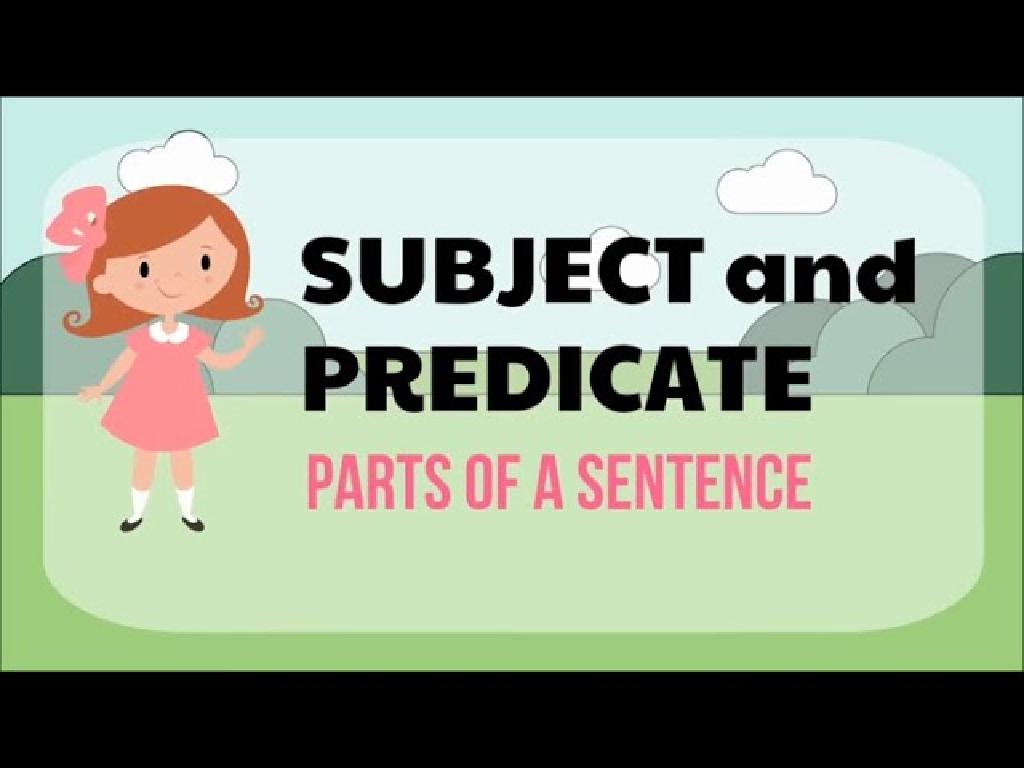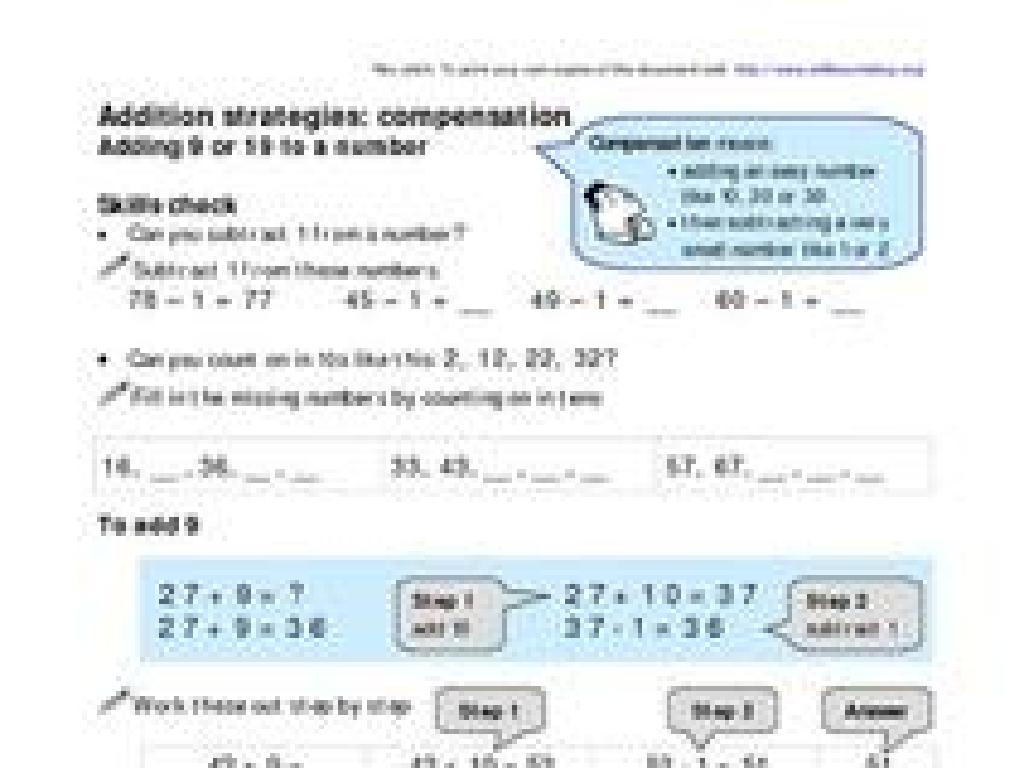Names Of Numbers - Up To 20
Subject: Math
Grade: Kindergarten
Topic: Numbers To 20
Please LOG IN to download the presentation. Access is available to registered users only.
View More Content
Welcome to Numbers!
– Greetings, little mathematicians!
– Learning numbers up to 20
– We’ll explore numbers 1 through 20
– Numbers are fun and everywhere
– Look around, numbers are all around us: 2 eyes, 4 wheels on a car
– Let’s count from 1 to 20 together
– Practice counting with me, starting at 1 and ending at 20
|
This slide is designed to introduce kindergarten students to the concept of numbers up to 20. Start by greeting the students warmly to create an inviting learning environment. Emphasize that numbers are not just for math class; they are a part of everyday life. Use examples from the classroom or their own experiences to show how numbers are used, like counting toys or snacks. Engage the students in a fun counting activity where they can count aloud from 1 to 20. This will help them become familiar with the number sequence and recognize the numbers visually and auditorily. Encourage participation and make sure to praise their efforts to build confidence.
Learning Numbers 1 to 5
– Starting with numbers 1 to 5
– Matching numbers to objects
– Each number equals a set of items, like 1 apple, 2 shoes
– Counting objects together
– We’ll count items like blocks or crayons to learn
– Practice makes perfect
|
This slide introduces the very basics of counting for kindergarten students. Start by showing them the numbers 1 through 5 and then associate each number with a physical object, such as 1 teddy bear, 2 socks, 3 blocks, 4 crayons, and 5 stars. This visual association helps them understand that numbers represent quantities. Engage the class by counting objects together, ensuring they recognize the number and the quantity it represents. Encourage them to practice counting with various items to reinforce their understanding. The goal is to make them comfortable with numbers 1 to 5 through repetition and fun activities.
Learning Numbers 6 to 10
– Counting from 6 to 10
– Count objects for each number
– Use toys or blocks to count
– What number is after 5?
– Number 6 comes after 5
– Practice counting together
– We’ll count as a class with fun activities
|
This slide is aimed at helping Kindergarten students become familiar with the numbers 6 to 10. Start by engaging the students in a counting exercise from 6 to 10. Use physical objects like toys or blocks to make the counting tangible and interactive. Ask the students which number comes after 5 to reinforce the sequence of numbers. Encourage them to answer and then confirm that 6 follows 5. Finally, involve the whole class in a fun counting activity to practice together. This could include counting claps, jumps, or objects in the classroom. The goal is to make the learning process enjoyable and to solidify their understanding of the order of numbers.
Counting Beyond 10: Numbers 11 to 15
– Discover what comes after 10
– Count objects from 11 to 15
– Use toys or blocks to count 11, 12, 13, 14, 15
– Understand numbers 11 to 15
– These numbers are just like 1 to 10, but with a 1 in front!
– Practice counting these numbers
– Try counting with fingers and drawings
|
This slide introduces kindergarteners to the numbers 11 through 15, building on their existing knowledge of counting up to 10. The goal is to familiarize them with the concept that numbers continue beyond 10 and to practice counting with tangible objects like toys or blocks. Emphasize that 11 to 15 are not new or difficult numbers; they are simply an extension of what the students already know. Encourage them to use their fingers to count and to visualize the numbers with drawings or objects. Activities can include matching number cards to a group of objects, counting out loud as a class, and using number lines. The focus should be on making the learning process enjoyable and interactive.
Counting Up: Numbers 16 to 20
– Learning numbers 16 to 20
– After 15, we have 16, 17, 18, 19, and 20!
– Counting together as a class
– We’ll count out loud from 1 to 20, focusing on 16-20.
– You’re doing an awesome job!
– Practice makes perfect
– Keep practicing at home too!
|
This slide is aimed at reinforcing the children’s ability to count from 16 to 20. Start by recapping the numbers up to 15 to ensure a smooth transition to the new set of numbers. Engage the class by counting together out loud, emphasizing the new numbers. Praise their efforts to boost their confidence. Encourage them to practice counting at home with their family or using objects like toys to make learning fun and interactive. The goal is to make the children comfortable with recognizing and saying the numbers 16 to 20.
Number Match Game
– Let’s play a matching game!
– Match numbers to objects
– See 5 apples? Find the number 5.
– Helps remember numbers
– Matching makes numbers easier to recall.
– Are you ready to have fun?
|
This interactive game is designed to help Kindergarten students reinforce their understanding of numbers up to 20 by matching them with corresponding quantities of objects. Set up stations with different numbers of items, ranging from 1 to 20, and have the students place the correct numeral beside each group. For example, if there are 3 teddy bears, the student should place the number 3 card next to them. This activity not only aids in number recognition but also in counting skills. Be prepared with a variety of objects and ensure that each child gets a turn to participate. Offer praise and gentle corrections as needed. The goal is to make learning numbers a fun and engaging experience.
Counting Practice: Numbers Up to 20
– Count objects as a group
– Practice counting out loud
– Learn numbers 1 through 20
– Use everyday items like blocks or crayons for counting
– Build counting confidence
– Encourage participation and correct pronunciation
|
This slide is designed for a fun and interactive counting activity. The teacher will guide the kindergarten class in counting objects together, ensuring that each child participates and practices counting out loud. The goal is to familiarize the students with the numbers 1 through 20. Use tangible items such as blocks, crayons, or toys that the children can touch and count. This tactile experience reinforces number recognition and helps build confidence in their counting skills. Praise correct counting and gently correct any mistakes. This activity lays the foundation for number sense and prepares students for more advanced mathematical concepts.
Class Activity: Number Hunt
– Let’s go on a Number Hunt!
– Find items matching numbers 1-20
– Count with friends around the room
– Enjoy learning numbers together!
|
This activity is designed to help Kindergarten students recognize and learn the names of numbers up to 20 through a fun and interactive game. Set up the classroom with various objects or pictures that represent numbers from 1 to 20. Students will move around the room in small groups to find and count items that correspond to the numbers. Encourage them to work together and assist each other in counting. Possible variations of the activity could include: using stickers for each found number, creating a number chart to mark off, or giving each group a specific number range to focus on. This hands-on approach helps solidify their understanding of numbers and counting in a social and engaging way.
Celebrating Numbers 1 to 20
– Congratulations on learning numbers!
– You’re now amazing number experts
– Time for a big round of applause!
– Clap your hands for your hard work!
– Keep practicing your numbers at home
– Try counting objects around you!
|
This slide is meant to celebrate the students’ achievement in learning to count up to 20. It’s important to end the lesson on a positive note, reinforcing their confidence and sense of accomplishment. Encourage the children to give themselves and their classmates a big round of applause to celebrate their hard work. Remind them to keep practicing by counting things they see every day, like toys, steps, or even snacks. This will help solidify their understanding of numbers and quantities. As a teacher, you can prepare a few simple counting activities for them to take home, such as counting and coloring worksheets or a small booklet with numbers and pictures.






